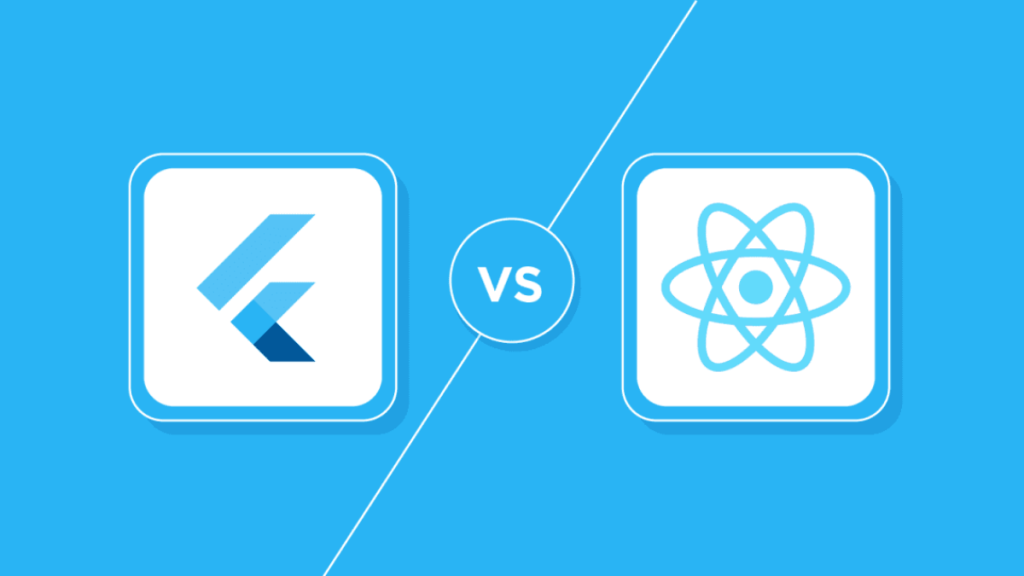Quick Summary
Choosing the right framework for mobile app development is critical for success. As businesses undergo Digital Transformation, selecting a framework that aligns with their goals and ensures long-term scalability is key. This article explores Flutter vs React Native, comparing their features, strengths, and weaknesses to help guide you in choosing the ideal framework for building a successful app in 2025.
Introduction
In the world of mobile app development, the choice of framework plays a crucial role in determining the success of an application. When it comes to cross-platform app development in 2025, Flutter vs React Native remains a hot debate. Both frameworks promise faster development, seamless user experiences, and reduced costs. But which one is right for your project? Let’s explore.
Overview of Flutter
Flutter, developed by Google, is an open-source UI software development kit (SDK). It uses the Dart programming language and boasts a rich widget library, allowing developers to create visually appealing apps for both iOS and Android platforms.
Key Features:
- Dart Language: Flutter uses Dart, a modern, client-optimized programming language.
- Rich Widget Library: Offers customizable and pre-designed widgets for a consistent user interface.
- Hot Reload: Facilitates instant code changes during development.
- Native Performance: Ensures a high-performance experience through its rendering engine, Skia.
Pros of Flutter:
- High-performance UI rendering.
- Consistent app behavior across platforms.
- Active support from Google and the developer community.
Cons of Flutter:
- Relatively large app sizes.
- Limited support for some third-party libraries.
Overview of React Native
React Native, developed by Meta (formerly Facebook), is a powerful open-source framework for building cross-platform mobile applications. It uses JavaScript and React, a popular web library, to create apps that work seamlessly on both iOS and Android with a single codebase.
If you’re looking to build efficient, high-performance mobile apps, hire React Native developers who can leverage this framework’s capabilities to deliver fast and scalable applications tailored to your business needs. With their expertise, you can ensure a smooth development process and a top-quality app for your users.
Key Features:
- JavaScript Core: A language widely known and used by developers globally.
- Reusable Components: Encourages code reuse across platforms.
- Live Reload: Allows developers to see changes in real time.
- Community Support: A vast ecosystem with numerous third-party libraries and plugins.
Pros of React Native:
- A mature ecosystem with extensive resources.
- The lower learning curve for developers familiar with JavaScript.
- Compatibility with native modules for complex functionalities.
Cons of React Native:
- Performance may lag for graphically intensive apps.
- Requires additional optimization for platform-specific features.
Flutter vs React Native: Performance Comparison
Performance is a critical factor when choosing a framework:
Flutter:
- Rendering: Flutter’s Skia engine ensures smooth and consistent rendering.
- Animation: Offers superior animation capabilities with high frame rates.
- Speed: Slightly faster for UI-heavy applications due to its widget-based approach.
React Native:
- Bridge Mechanism: Uses a bridge to communicate between JavaScript and native modules, which can introduce latency.
- UI Performance: Adequate for most apps but may struggle with graphically demanding tasks.
- Optimization Needs: Requires fine-tuning for high-performance demands.
Community and Ecosystem
Both frameworks boast active communities and rich ecosystems, but there are differences:
Flutter:
- Community Growth: Growing rapidly due to Google’s backing and regular updates.
- Packages: Over 25,000 packages are available in the Flutter ecosystem.
- Documentation: Comprehensive and beginner-friendly.
React Native:
- Established Community: Larger and more mature due to its earlier release.
- Libraries and Plugins: Extensive collection of third-party integrations.
- Developer Resources: Abundant tutorials, forums, and community contributions.
When to Choose Flutter
Flutter is ideal if:
- Your app requires a consistent and visually rich UI across platforms.
- You prioritize performance and seamless animations.
- You prefer leveraging Google’s latest technologies, such as Firebase.
- You aim to target multiple platforms, including web and desktop.
When to Choose React Native
React Native is a better choice if:
- Your team has prior experience with JavaScript and React.
- You want to leverage existing third-party libraries.
- Your app requires integration with platform-specific features.
- You’re focused on reducing the learning curve for your development team.
Conclusion
Both Flutter and React Native are excellent frameworks for cross-platform development in 2025. The choice between them depends on your project’s specific requirements, your team’s expertise, and the app’s intended features. By understanding the strengths and limitations of each framework, you can make an informed decision that aligns with your goals. Ultimately, the decision in the Flutter vs React Native debate should be guided by what best meets your business needs and delivers the desired user experience.
Flutter vs React Native: FAQs
1. Which framework offers better performance?
Ans: Flutter generally offers better performance for UI-intensive applications due to its rendering engine. However, React Native is sufficient for most standard apps.
2. Is Flutter better for startups?
Ans: Yes, Flutter’s ability to deliver visually rich and consistent apps makes it an excellent choice for startups looking to make a strong impression.
3. Can React Native handle complex animations?
Ans: While React Native supports animations, it may require additional optimization for complex and high-performance animations.
4. Which framework has a better ecosystem?
Ans: React Native currently has a more mature ecosystem, but Flutter’s ecosystem is rapidly growing.
5. What programming languages do these frameworks use?
Ans: Flutter uses Dart, while React Native uses JavaScript.
6. Which framework is more future-proof?
Ans: Both frameworks are actively maintained and evolving. Flutter’s integration with Google’s ecosystem may give it a slight edge in the long term.
